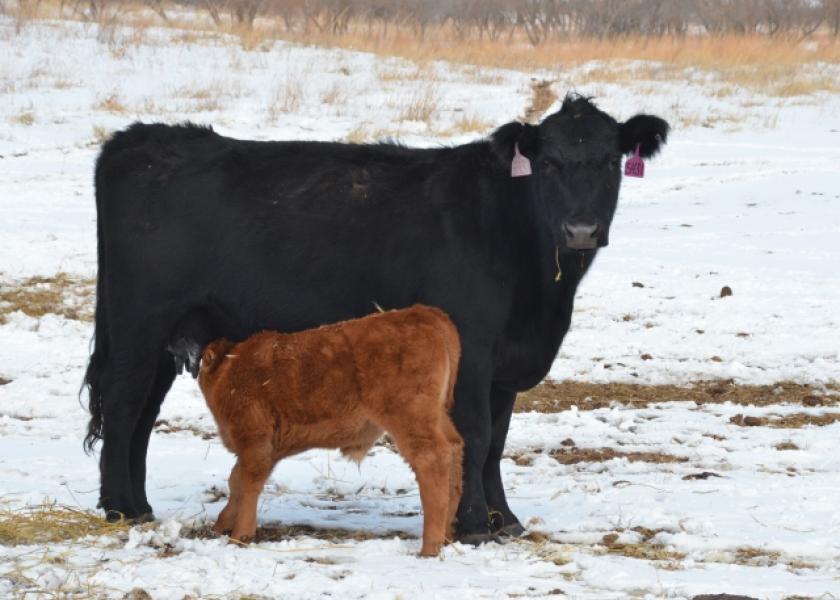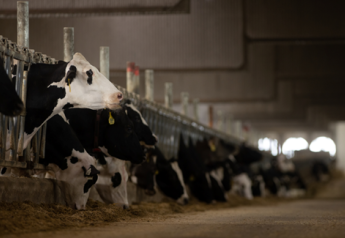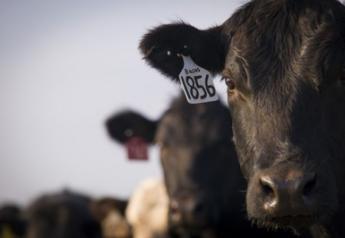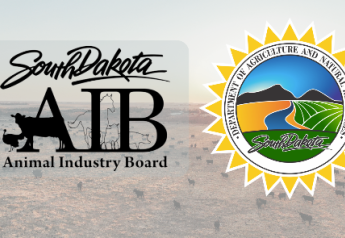Finish the Race Strong: Quality Nutrition a must for Cowherd Success

The finish line is nearly in sight for cowherds around the country as spring-calving season looms. For many spring-calving herds, late-fall or early-winter marks the start of the third trimester and a significant upward shift in nutrient requirements. Coincidentally, it’s also when most available forage resources are lowest in quality. This creates a significant gap between nutrient needs and nutrient delivery during what is arguably the most critical trimester in calf development.
This year, the ongoing drought around the country is compounding nutrient needs for cowherds. Dryness in your area may have cattlemen facing difficult decisions like feeding more hay and supplements than normal or culling animals.
“The drought and subsequent liquidation of cows have made late-gestation nutrition all the more important this year so the next generation of the cowherd can be set up for success,” says Patrick Gunn, Ph.D., cattle nutritionist with Purina Animal Nutrition.
Cow nutrition during these three months influences everything from calving ease, calf vigor at birth, long-term calf performance and next season’s breeding success for the cow.
Short- and long-term impacts of cow nutrition for the calf
Initial investments in quality nutrition have the benefit of positively affecting performance at calving and later in the calf’s life, benefiting overall profitability. Insufficient nutrition in the final trimester has significant ramifications.
“Cows channel 30% of their energy to support fetal growth and development during the third trimester,” says Gunn. “The fetus needs more nutrients from its dam than the previous two trimesters to fuel the final calf development of its organs, skeleton, lungs and immune system.”
If calf development requirements aren’t met in-utero, it can result in:
• Reduced birth weight and impaired growth
• Lower likelihood for the calf to reach its genetic potential
• Compromised immune system with a lifelong impact
• Long-term negative effects on fertility
• Setbacks to the dam’s reproductive efficiency
“The third trimester offers a unique opportunity to proactively invest in the future of the calf crop and replacement heifers,” says Gunn.
Cutting corners on nutrition to save money upfront has an impact on performance, and subsequently pocketbooks. Fetal nutrition studies in Oklahoma and Nebraska demonstrate that calves born to cows with adequate levels of protein and energy in the diet during the third trimester have improved average daily gain and overall health.[1],[2]
The Nebraska study compared the reproductive performance of heifers born to supplemented and non-supplemented cows while grazing corn stalks. Supplemented cows produced heifers with higher overall breeding season pregnancy rates (93%) compared to heifers from non-supplemented cows (80%).[3]
“The bottom line? Whether the calf is destined for the feedlot or the cowherd, adequate cow nutrition is paramount for their future performance,” says Gunn.
Meeting third trimester requirements
Calving is the main athletic event a cow fuels her body for. Prepare the cow and her growing fetus for a successful calving by focusing on the essentials – protein, energy, minerals and vitamins. And don’t forget to factor in changing weather. The colder it gets, the more energy cows need to maintain core body temperature, diverting energy away from the growing calf.
“Feed your cowherd with supplements that deliver additional energy and protein in a palatable package,” says Gunn. “Some supplements are designed to complement your existing forage resources, so cows only consume supplement when they need it.”
Year-round mineral supplementation is another great strategy to help meet third trimester requirements. Constant access to quality mineral helps cows build up mineral and vitamin reserves. Cows can pull from those reserves during critical times, including the third trimester, to support nutrient needs without depleting their stores.
The third trimester serves as the final sprint to the finish line – a time to dial in cowherd nutrition and not hold back, ultimately helping performance and producers' bottom lines.
[1] Range Beef Cow Symposium XXIII. 2013.
[2] Moriel, P., M.B. Piccolo, L.F.A. Artioli, R.S. Marques, M.H. Poore, and R.F. Cooke. 2016. Short-term energy restriction during late gestation of beef cows decreases postweaning calf humoral immune response to vaccination. J. Anim. Sci. 94. doi:10.2527/jas2016-0426.
[3] Funston, R.N., J.L. Martin, D.C. Adams, and D.M. Larson. 2010. Winter grazing system and supplementation of beef cows during late gestation influence heifer progeny. J. Anim. Sci. 88: 4094-4101.







